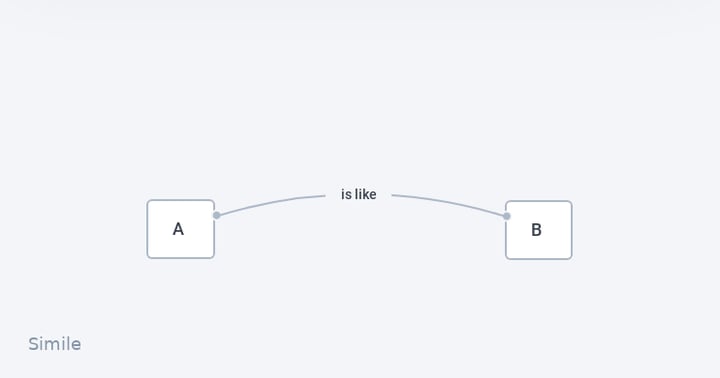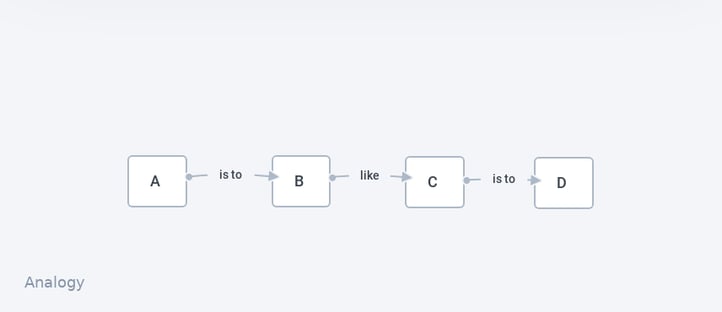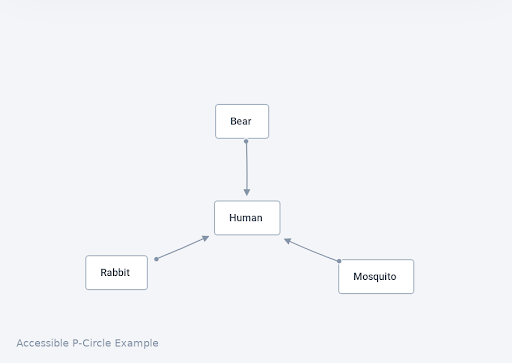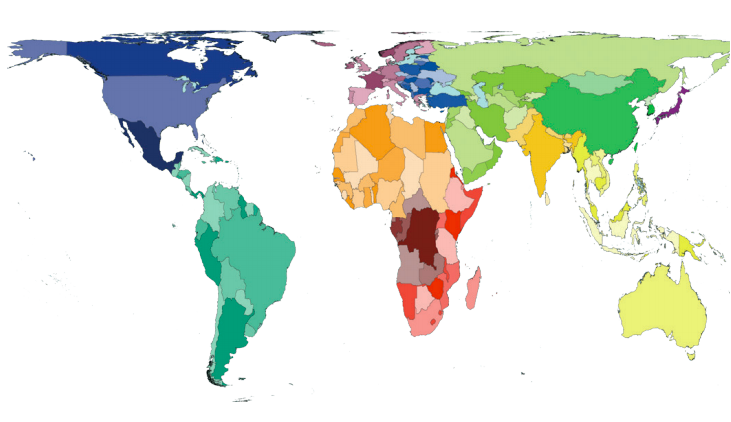Application: Lesson Plan for Teaching Cognitive Jigs in Nature Camp Setting
 Paul Corsi
·
5 minute read
Paul Corsi
·
5 minute read
This blog was written by Paul Corsi as a project for PADM 5449 at Cornell University.
Background and Context:
Primitive Pursuits in Ithaca, NY, and Lime Hollow Nature Center in Cortland, NY are organizations that work to create engaging outdoor experiences that foster a deep connection between people of all ages and their environment, their community, and themselves. Their mission, in systems thinking terms, is essentially to challenge participant’s LAMO thinking and to engage more fully with the VUCA universe (with a special emphasis on the ‘anthropocentric’ in LAMO). I have experience as a volunteer and participant in both programs, and I believe they offer an exciting and effective setting for teaching system thinking concepts to a diverse audience.
One of the core goals of both programs is help participants develop conscious attention to the world around them. Often this is accomplished through an activity called a ‘sit spot.’ A sit spot is essentially meditation in the outdoors. Participants simply sit down in a relatively comfortable spot in any outdoor area (preferably somewhere without an overwhelming human influence), and try to clear their mind and notice what is going on around them for at least 15 minutes (but ideally somewhere around 20-30 minutes) uninterrupted. Sometimes participants are given pens and paper and are encouraged to write down any observations or feelings that come to them during the experience. At Primitive Pursuits we would sometimes try and guide younger participants by encouraging them to focus on specific things. How many different birds do you hear? What animals did you see and what were they doing? Close your eyes and try to identify every noise you hear. How is the air moving around your sit spot? etc.
For Challenge 2, I have decided to incorporate a lesson about cognitive jigs (in particular focusing on P-Circles) into a sit spot activity that could be used at Primitive Pursuits, Lime Hollow Nature Center, or similar nature connection program. The participants for this particular lesson are children aged 9-14, but this lesson could be tailored to accommodate participants of all ages.
Lesson Plan: Sit Spots and Cognitive Jigs
Participant Profile:
2-3 Instructors
10-15 children aged 9-14
Learning Outcomes:
Participants will understand the basics of cognitive jigs, especially similes, analogies, and P-Circles, and be able to apply this understanding to their sit spot practice, communicating complex sensory experience, and interpersonal problem solving. It is recommended that all participants have prior experience with sit spots.
Setting:
Outdoors; preferably in a wooded area, but anywhere large enough to allow all participants to find a semi-secluded spot for their sit spot.
Required Resources:
- Visual representations of simile, analogy, and P-Circle structure.
- Writing supplies for each participant.
Lesson Plan:
1. Explain the concept of cognitive jigs:- Cognitive Jigs are:
- a structure of thought.
- Like a stencil but for ideas, thoughts, and information. Can be reused over and over.
- Emphasize that they can be used with all different kinds of information. Content agnostic.
- Useful for communication and problem solving.
- Just as we learn to move through nature ethically and with intention, cognitive jigs help us to think ethically and with intention.
- Similes and analogies are an accessible example of cognitive jigs. Use a poster or other visual example to show the structure of these jigs during the discussion.
- Frame the discussion like a Mad Lib or a word game where participants try and think up information to fill in the cognitive jig. After a few practice examples get participants to describe their surroundings using these jigs as though they were telling a friend about their day and what they saw.
- Emphasize how this structure helps us to communicate complex information easily.
 Easy Examples:
Easy Examples:
Your smile is like the sun.
The tree is tall like a telephone pole.
The frog is green like a leaf.
My heart is heavy like a rock.

Easy Examples:
Cat is to a mouse like a human is to a hamburger.
Nest is to a bird like hole is to a rabbit.
Doctor is to disease as detective is to crime.
Up is to down as left is to right.
3. Introduce concept of Perspective Circle or P-Circle:
- Brief discussion of Perspectives. Points & views. Anytime we explore an idea we are taking multiple perspectives.
- Perspective Circle: Helps us to understand how something can be viewed many different ways from different perspectives.
- Just like with similes and analogies, make sure to have a poster or other visual representation of a P-Circle for discussion.
- Discuss conceptual perspectives. Ask participants to think about something from different perspectives. ‘You’re all scientists, how do you view this tree? How about as an artist? A lumber mill owner?’
- Emphasize that all views are valid and deserving of consideration!

Here’s an example P-Circle with relevant content for discussion and practice:

- Use this example to talk about how the human is viewed many different ways by the other animals.
- Rabbits will run away. Bears will sometimes run, be aggressive if they feel their cub is threatened, or be curious if they assume we have food. Mosquitos want our blood! The same human can illicit all these different reactions depending on perspective.
- Ask participants to think of other animals and how they might have different or similar perspectives on humans. How would a pet dog react? What about an animal that has never seen a human?
- Once you feel confident that all participants are comfortable with P-Circles transition to the sit spot activity.
- Ask participants to find a sit spot away from all other participants for a set period of time. 15 minutes minimum, but 20-30 minutes is preferable.
- While sitting, participants should create a P-Circle with their sit spot at the center with different views circling it using the included worksheet. The worksheet is fairly simple and can be replaced by a notebook or blank piece of paper, though many participants would benefit from at least having some prompts in front of them during the exercise either way.
- Encourage participants to try and think about a handful of perspectives deeply, instead of shallowly about a many different perspectives.
- Instruct participants to spend a few minutes just sitting and settling into their spot before they begin filling out the worksheet.
- After participants return from their sit spots, have them share their P-Circles, and any other interesting experiences.
- Encourage discussion about how making a P-Circle helped participants to understand their sit spot more deeply. Do they see their sit spot in a new light?
- When and how can we use P-Circles beyond sit spots? Use this to segway into a discussion about how P-circles can help us problem solve and work with others, and find common ground between different perspectives.
- The P-Circles jig helps us to be conscious of a variety of perspectives on an idea. Can anyone share a problem they have had and how a P-Circle would have helped them solve it?
Notes:
- Experiment with this format for teaching other jigs (in particular Part Parties and Barbells could work nicely in this context).
- If possible a portable dry erase board with drawings of the jig structure could be used to write in each participant created simile, analogy, or P-Circle to further drive the point home, but logistical considerations may make this impractical.
- Experiment with choosing settings that provide access to several different ecosystem types for sit spots (open field, successional forest, hemlock grove, creek, etc.). Having participants share their experiences in a variety of settings can lead to interesting discussions.
- Try doing this activity in reverse. Have participants write about different perspectives on their sit spot and then talk about cognitive jigs and P-Circles. This could help drive home the idea that cognitive jigs are something we already know how to do instinctively.
- Kids need to move, and depending on your group’s dynamic, adding more movement into the program could be beneficial. Try splitting into groups and going on simile walks. Each group explores a separate area and then describes what they experienced to the other group using similes or analogies. Have participants act out the accessible P-Circle example. “You’re all rabbits and I’m a loud human, what do you do?”
P-Circle Sit Spot Activity
Name:___________________________________
Make a P-Circle for your Sit Spot!
Prompts: How would different animals see this spot? Would there be food for them? Would they be safe? Would they be able to move freely? How would someone from a desert or Antartica feel about this spot, and what would they notice? What would someone who hates going outside think about this spot? If someone was lost could they find food, shelter, or fire here? Would someone in a wheelchair or on crutches have an easy time getting here? What would this spot feel like to a deaf or blind person? Be creative!

.png?width=150&height=150&name=CRL%20GOAT%20Logo%20(4).png)


